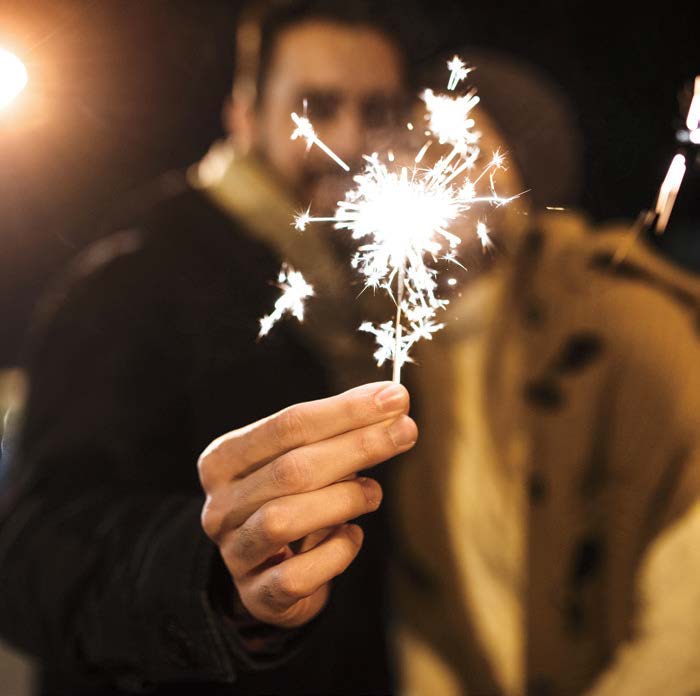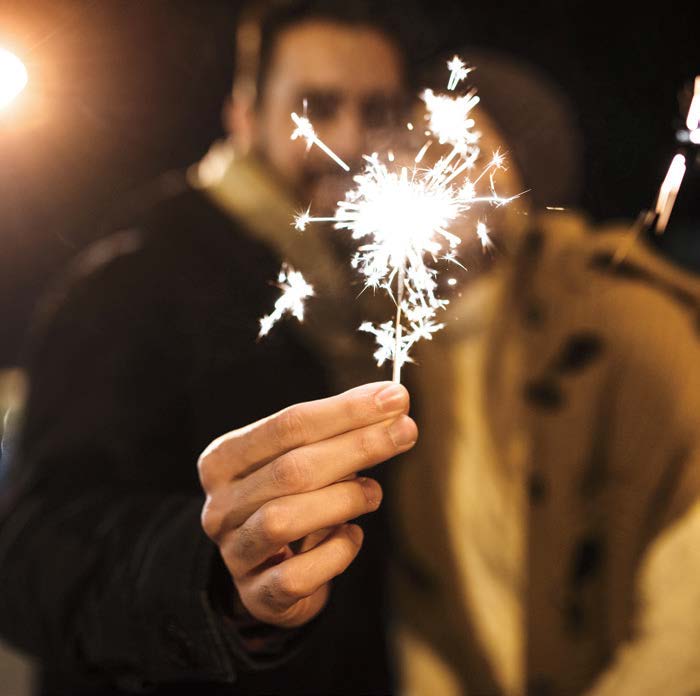
BELARUS (1/01, 10 a.m.)
During the traditional celebration of Kaliady, still-unmarried women play games to predict who will wed in the new year. In one, a pile of corn is placed before each woman and a rooster is turned loose — whichever pile it approaches first reveals who will be the first to marry.
CENTRAL AND SOUTH AMERICA (1/01, 3 a.m.)
In Brazil, Ecuador, Bolivia and Venezuela, it’s considered lucky to wear special underwear on New Year’s Eve, and in cities like São Paulo and La Paz, market vendors start displaying brightly colored underpants a few days before the holiday. The most popular colors are red and yellow — red is supposed to bring love in the coming year, and yellow is supposed to bring money.
DENMARK (1/01, 8 a.m.)
Danes ring in the year by hurling old plates and glasses against the doors of friends’ and relatives’ houses. They also stand on chairs and then jump off them together at midnight. Leaping into January is supposed to banish bad spirits and bring good luck.
JAPAN (1/01, 4 p.m.)
The faithful go in costume as the next year’s zodiac animal to the local temple, where bells chime a sacred 108 times.
PHILIPPINES (1/01, 3 p.m.)
Round shapes (representing coins) are thought to symbolize prosperity for the coming year, and many Filipino families display heaps of round fruit on the dining table for New Year’s Eve.
SCOTLAND (1/01, 7 a.m.)
The Scottish celebration of Hogmanay includes “first-footing,” a ritual where the first person to cross the threshold of a home in the new year brings a gift for luck (whisky is the most common).
SPAIN (1/01, 8 a.m.)
At midnight, it’s customary in Spain to quickly eat 12 grapes — one at each stroke of the clock — to symbolize the wish for good luck in each month of the coming year. In Madrid, Barcelona and other cities, revelers congregate in the main squares to gobble their grapes together and pass around bottles of cava.

Kasia Pawlowska loves words. A native of Poland, Kasia moved to the States when she was seven. The San Francisco State University creative writing graduate went on to write for publications like the San Francisco Bay Guardian and KQED Arts among others prior to joining the Marin Magazine staff. Topics Kasia has covered include travel, trends, mushroom hunting, an award-winning series on social media addiction and loads of other random things. When she’s not busy blogging or researching and writing articles, she’s either at home writing postcards and reading or going to shows. Recently, Kasia has been trying to branch out and diversify, ie: use different emojis. Her quest for the perfect chip is never-ending.


